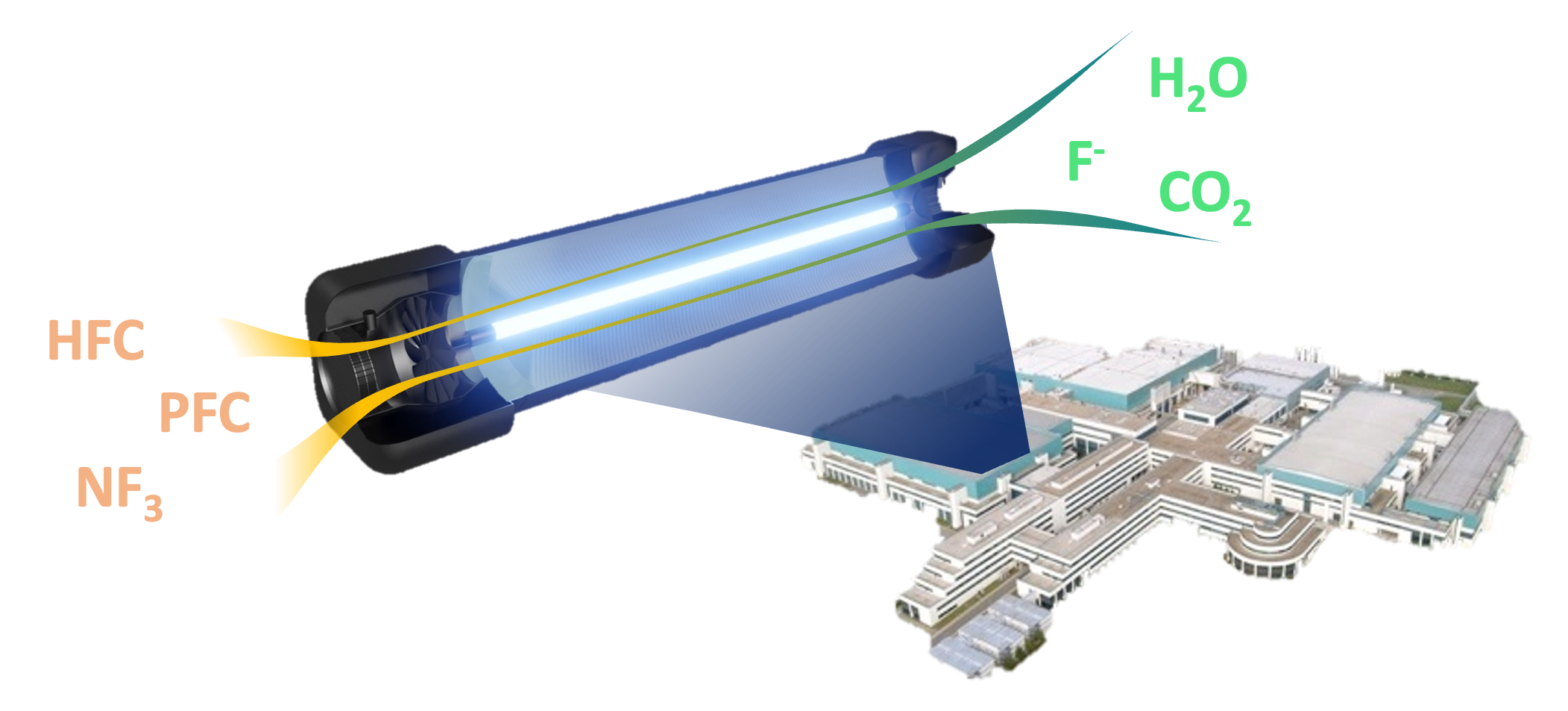InnoFlex transforms semiconductor manufacturing with our advanced gas abatement systems. Our solution efficiently eliminates harmful emissions using only light energy, significantly reducing both environmental impact and operational costs.
Semiconductor fabs rely on process gases with global warming potentials up to 24,000 times that of CO2, contributing over 75% of their direct CO2 equivalent emissions. These gases, primarily fluoride and nitrous oxide, significantly worsen global warming, posing a threat to our planet’s habitability. To meet ESG targets, reduce carbon costs, and comply with regulations, fabs must eliminate these emissions. However, current gas abatement systems are energy-intensive and costly, requiring the heating of vast gas volumes to 1000°C to remove harmful compounds.
InnoFlex leverages photocatalysis and nanotechnology to create a revolutionary nanomaterial that uses only light energy to eliminate harmful compounds from the air. This material, the core of our gas abatement system, reacts with pollutant gases to convert them into harmless substances, all at room temperature.
Proven effective in industries like livestock, our solution can achieve up to 100% reduction of gases, even at low concentrations. Designed for semiconductor fabs, the system is low maintenance, compact—fitting within two shipping containers—and capable of removing nearly all harmful emissions.

Our cutting-edge technology uses light to activate a catalyst, setting off a chain reaction that efficiently breaks down harmful emissions. We utilize photocatalytic materials that function similarly to solar cells. While solar cells convert light into electricity, our materials use light to create redox reactions. When light hits the catalyst, it generates free electrons, which then produce energetic particles. These particles react with and neutralize the harmful emissions, breaking them down into less harmful components.
The initial part of this process leverages the same mechanisms as those used in solar cells, which is key to our efficiency. The secret to making highly effective photocatalysts lies in optimizing these materials. By applying advanced deposition technologies—similar to those used in the production of high-efficiency solar cells—we can finely tune the properties of our photocatalytic materials.
